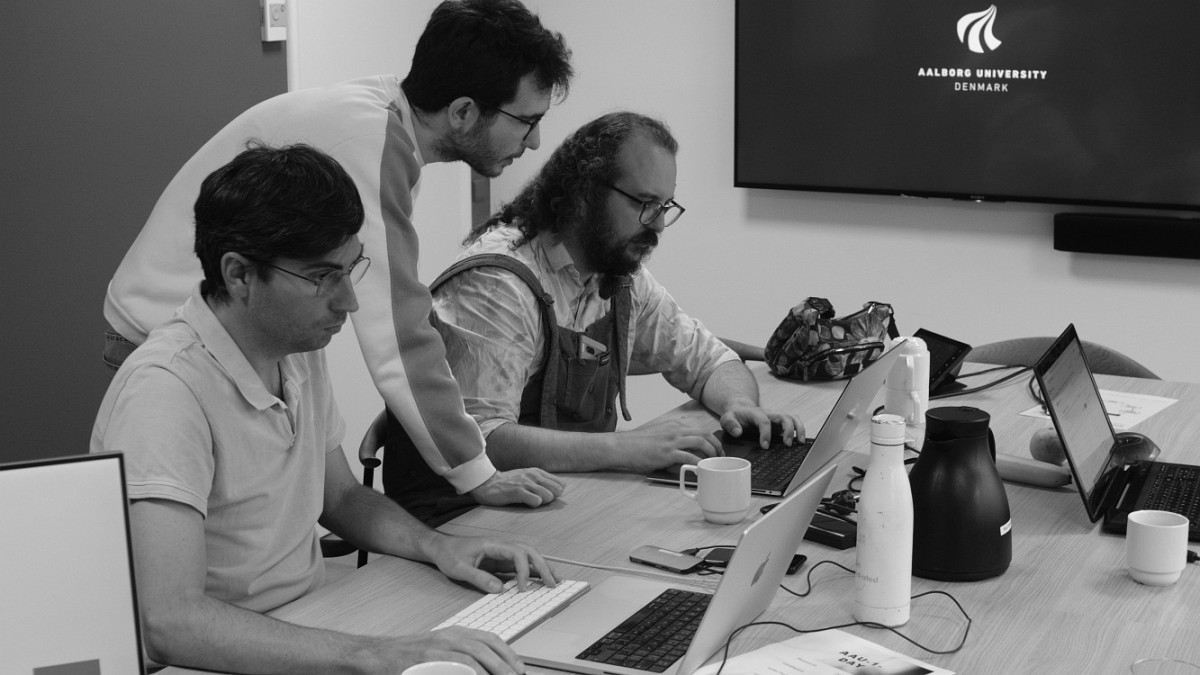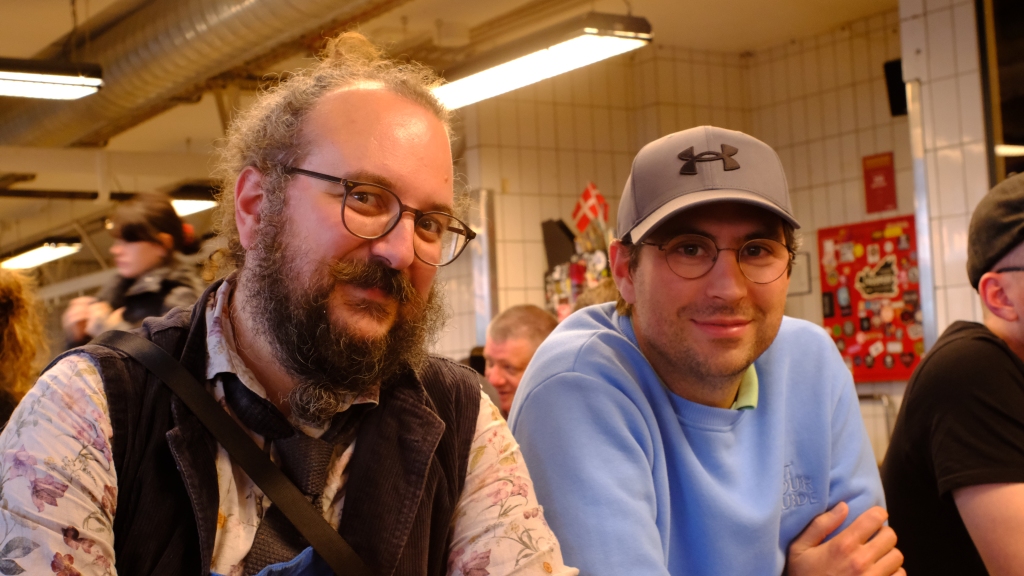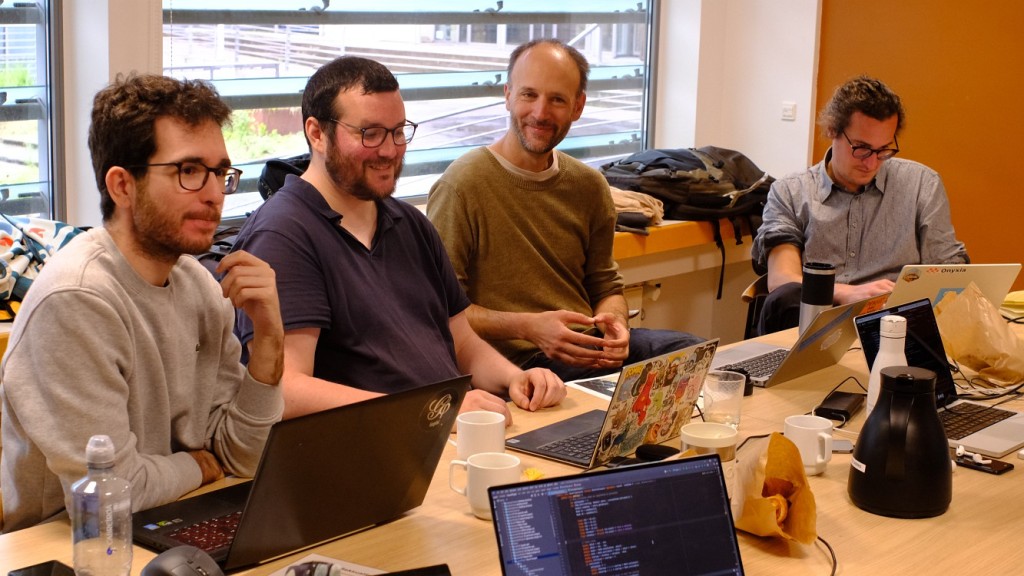> this blog post is a cross-posting from the blog of nocodefunctions.com, which is a companion toolbox for Gephi developed by the author.
How can we give back to Gephi so that it continues to thrive in the years to come?
I am not steering Gephi, so please do not take the following as anything “official” nor definitive on the topic.
Please check the recent posts on the Gephi blog by Mathieu Jacomy and Mathieu Bastian to get the latest views from the core Gephi team.
Ok, let’s dive in:
Interests should be aligned – and money makes things complicated
Gephi is used by a large diversity of actors: students to governments, librarians, academics and professional scientometricians, dataviz designers, social media listeners, citizen journalists, fraud detection analysts and NGO volunteers to professional osint and infosec specialists and many more.

In this list of users, companies would have been natural contributors to the development of Gephi: “take my money, and in exchange I have a voice in Gephi to develop this or that feature”.
However Gephi is a free and open source software, and it will not accept funding in return for a right to control how it is developed.
This stance is not a mistake nor a handicap!
It is a conscious choice to evolve Gephi for all – not just in the direction that is set by the stakeholders which can fund it.
But as a result, a very common resource – funding money – is not directly available to Gephi.
This simple absence of a market mechanism (I buy, you deliver) prevented Gephi from accessing resources that would have been so useful – and it is also why I esteem and respect the team who develops this software for so long, to provide it as a digital commons.
So, are we stuck? No!
There are many alternatives to contribute to Gephi, in ways that make the best of your abilities AND with tangible feedbacks beyond the existence of Gephi itself.
This blog post will be expanded as I get your feedback: do you see new ways to support Gephi? Would you like to be cited as a contact point for any of those?
Are you a company or for-profit organization?
1. Fund Gephi, despite the hurdles
At the moment, there is no legal entity that is set to accept funding for Gephi, though it is bound to come one day.
However, events sponsored by Gephi could still receive funding, through the university that will host the event or a similar channel?
What to expect from it?
The 2nd edition of the Gephi week (August 2022) has been extremely productive.
It delivered bug fixes, new plugins, new directions for development but most of all it generated a renewed energy to participate and contribute.
By funding the next edition, you contribute in a very concrete manner to making Gephi more stable in the long term.
Are you an academic?
2. Make use of your unique power: citations!
As a librarian, professor, student… a very impactful action in support of Gephi is to cite it in the bibliography of the documents your produce – in articles of course but in every publication really, including applications to projects and reports.
These are the two papers referencing the tool you love:
> Bastian, M., Heymann, S., & Jacomy, M. (2009, March). Gephi: an open source software for exploring and manipulating networks. In Proceedings of the international AAAI conference on web and social media (Vol. 3, No. 1, pp. 361-362). link
> Jacomy, M., Venturini, T., Heymann, S., & Bastian, M. (2014). ForceAtlas2, a continuous graph layout algorithm for handy network visualization designed for the Gephi software. PloS one, 9(6), e98679. link
What to expect from it?
Gephi has an excellent academic standing, with the original contribution cited more than 10,000 times and Gephi being mentioned in over 39,000 academic publications.
Explicitly referencing Gephi in your publications contributes to making Gephi visible by making its impact measurable: it enhances its legitimacy and fosters adoption.
And for you?
Gephi having an established presence and growing reputation will make it easier to convince reviewer #2 that Gephi was indeed the right choice for this network analysis 😉
3. What about organizing an academic conference?
I think that Gephi has actually never been the central topic of an academic conference 🤔. Would you like to be the first? This could be about Gephi itself, or Gephi in relation with your scientific specialty (network analysis, social networks, organizational mapping, biological networks, computer science, forensics, etc.). Gephi is part of a broader ecosystem of software for the visual exploration of networks: Cytoscape, NodeXL, Graphext… come to mind. Organizing a conference around these would make total sense!
4. Grant writing!
At the suggestion of a Gephi user and academic: it would actually make sense to apply for funding to any local / international research funding agency, where Gephi would be listed as an essential resource in need of financing. Either directly or through the dedication of a research engineer / research designer / data scientist position working on Gephi, within the project team… these are just initial thoughts.
I personnally would love the idea. I could also connect you to academics who would be outstanding contributors to such a grant writing project in France or the European Union. Do get in touch! (my contacts are at the bottom of this post).
Do you ever write tutorials, how-tos, blog posts?
5. Write a simple intro about your experience using Gephi, help others discover it
A classic writer’s block about Gephi is that “I am not expert enough” to write about it.
You are probably much more expert than you think (see next paragraph), but in any case you can explain and document the use case that you worked on with Gephi.
This is a very, very useful contribution to Gephi.
It makes it discoverable, easier to understand and it showcases what it can do.
Again, a common conception is that what we do is never “original enough” to be worth writing about.
Absolutely not: each dataset or research question has interesting specificities.
Help fellow users understand what you did and how you did it!
And if the case is confidential, don’t let it stop you!
Transform and abstract your case and showcase the principles you followed.
6. Shoot videos or shorts, any kind of social media postings are useful, too
I mentioned written pieces because that’s in my comfort zone.
But videos, short or long, or posts on your favorite social media would be perfectly useful!
Examples
These are quite “high effort” examples, just to inspire you about the variety of formats. Do start with something smaller in scope!
What to expect from it?
You gain the warm glow of knowing that you helped users discover what is possible with Gephi.
Not interested in warm feelings?
Then do it for the SEO, as Gephi is at the cross-road of network analysis, data science and data visualization: all SEO boxes checked at once.
Are you a beginner or moderately experienced with Gephi?
7. Help translate Gephi in your language!
Gephi is available in 22 languages, which is a good start but we can do better to bring the software to many other linguistic communities!
Also, not all of the current 22 languages are translated at 100%.
What you can do is participate in the translation!
It all happens online, here.
Even if the interface looks intimidating at first, do register and get a start! And as always, don’t hesitate to request help on the Gephi Facebook group 🙂
8. Chat and contribute to the Gephi group on Facebook!
Yes, Facebook is really not anyone’s cup of tea.
Discord, LinkedIn, Slack, a WordPress forum… all these would be preferable in some way and yet ten times less used than the group on Facebook.
So we stay there for the moment.
The Gephi Facebook group has close to 10,000 members and is a very welcoming and friendly community.
Join, post and read!
Stuck in any way?
Want to showcase a result?
Definitely the place to post about it.
And if you see anyone requesting assistance, which happens several times per week actually, have a look and it might well be something you have the answer to!
Don’t be shy to offer your assistance, again my feeling is that we all tend to underestimate how helpful even a small piece of advice or assistance can be.
What to expect from it?
By giving back to the community, you are helping somebody who is a beginner just like you were some time ago. You help the community grow.
Contributing to the Gephi Facebook group will also push you up on the learning curve by exposing you to a variety of cases, questions and solutions that you did not encounter in your usual flow of work with Gephi.
A kind of learning platform!
Are you quite experienced with Gephi?
9. Join the Slack group for Gephi!
This Slack group exists in some form for many years and is used by the core developers of Gephi. I think it became more widely used at the occasion of the Gephi Week for 2022.
It is different from the Facebook group in the sense that it is a channel with a lower frequency of postings, with bursts of discussions around organizing and developing Gephi, rather than users helping other users. So it is quite exciting because you can see “Gephi in the making” but to remain productive, it should remain concentrated on that – steering and pushing Gephi forward, not really discussing how to use filters 😉
If you feel that you could contribute to this kind of discussions, do join here. You are not absolutely certain? Do join and be a listener for the first weeks, and you’ll see whether you want to be part of the discussions or not.
What to expect from it?
Well, that is super interesting to get close to the core of the Gephi app and community! This is the place where you could learn about the things brewing for the next months, and suggest contributions you can make: in skills, time, money, credit, etc.
I would like to emphasize that on this channel the most important are contributions (things you can do), not suggestions (things others should do…). The entire group of Gephi core contributors are pretty overwhelmed already, let’s give them some help, not a wishlist! 🙂
Are you a consultant / free-lancer / slasher?
10. Organize trainings and workshops!
It is not always super clear that Gephi as a topic and as an asset is for everyone – it doesn’t have to be contained to the gephi.org website or in the Gephi software. You can develop a free or commercial and / or for-profit activity about Gephi. One obvious activity would be training sessions or workshops about Gephi, or any consulting activity in a given sector, leveraging Gephi. Maybe that when this gets clarified, we’ll see a broader offer for trainings in Gephi?
What to expect from it?
Designing a training or workshop about Gephi is always a great occasion to re-learn what had become habitual. Besides the revenues you will generate from it, it will also establish your credentials in the domain.
Are you an indie developer, a startup or a larger company with resources for R&D?
11. Develop the ecosystem around Gephi!
Gephi provides hooks of an outstanding quality, that make it super convenient to develop your projects with a strong base:
- the Gephi Toolkit is a standalone Java library that provides all the goodness of Gephi in of your projects, out of the box, with plenty of documentation
- the gexf network format, which the Gephi team developed, provides a rich description of your networks – attributes, visual features and dynamic dimension as needed
- the Gephi graphstore is the low level, standalone graph engine that powers Gephi and you could use it in your own projects too!
- Gephi lite, a web-based version of Gephi for interactive visualizations in the browser – read about it in the Gephi blog.
What to expect from it?
Using these Gephi assets in your projects will save you time, not reinventing the wheel of a network app that includes the graph itself but also the algorithms, layouts, filters, management of attributes, I/O machinery etc. that you will also need pretty quickly. By doing so, you serve Gephi as you will naturally get involved in pushing Gephi and its various assets forward.
Are you a developer with significant experience?
It is on purpose that I kept this item for the end of the list. Indeed, we often assume that if we can’t code, we can’t contribute to Gephi. The 11 ways to contribute to Gephi listed just before have changed your outlook, I hope. Gephi really needs these 11 first types of contributions!
As a senior developer (or better said: not a full beginner in Java), you can also contribute to Gephi in several ways:
12. Java developer: shine!
Everybody has their own learning path, here is one:
- one way to get acquainted with Gephi is to play with the Gephi Toolkit, which is the Gephi headless library for Java. It will give you a sense of how the API is structured, with a strong modular architecture and some not-so-common design patterns (not familiar with SPIs? You will be served! 😀).
- then you might be interested in developping a plugin, which is another steep learning curve but very rewarding because, upon publication, your plugin becomes available to the entire Gephi user base (you can also choose to keep it private, of course).
- in the course of using the Gephi toolkit or developing a plugin, you might open issues on Github. And depending on your expertise and grit, you will also look at the source code of Gephi and find things to solve. This is very welcome, of course.
13. Developer of desktop apps / Rich Client Applications
Gephi is built on top of the Apache NetBeans Platform, which is the Rich Client Application of the NetBeans IDE. If you have a strong interest in NetBeans / RCA / desktop applications / or the intrincaties of targetting a desktop app specifically for Windows of MacOS, you could make contributions of critical importance.
14. OpenGL for Java
I might be sloppy here as I have close to zero knowledge of the domain, but the visualization engine of Gephi is using OpenGL and that is of course quite a tricky aspect. I don’t have the details but Gephi is in the middle of a major upgrade of the underlying technologies for this OpenGL stuff, so if you or your organization is knowledgeable about this subject, you could also make essential contributions.
What to expect from it?
Gephi is led by developers who are first-class in their trade. Did you know that Gephi won a Duke Award back in the days? Contributing to this open source project would be a great learning experience for everyone involved and would speed up the delivery of key features. Gephi is also an open and free software: if you personally care about contributing to a FOSS, Gephi is a perfect choice ❤️.
In the end
If you’d like to contribute to Gephi in any of the ways listed above, a great place to initiate a discussion would be the Gephi Facebook group. I’d also love to get in touch! Just to discuss, give suggestions and point to the right person or resource. Don’t hesitate! I am Clement Levallois and my email is clement.levallois at gephi dot org.









































